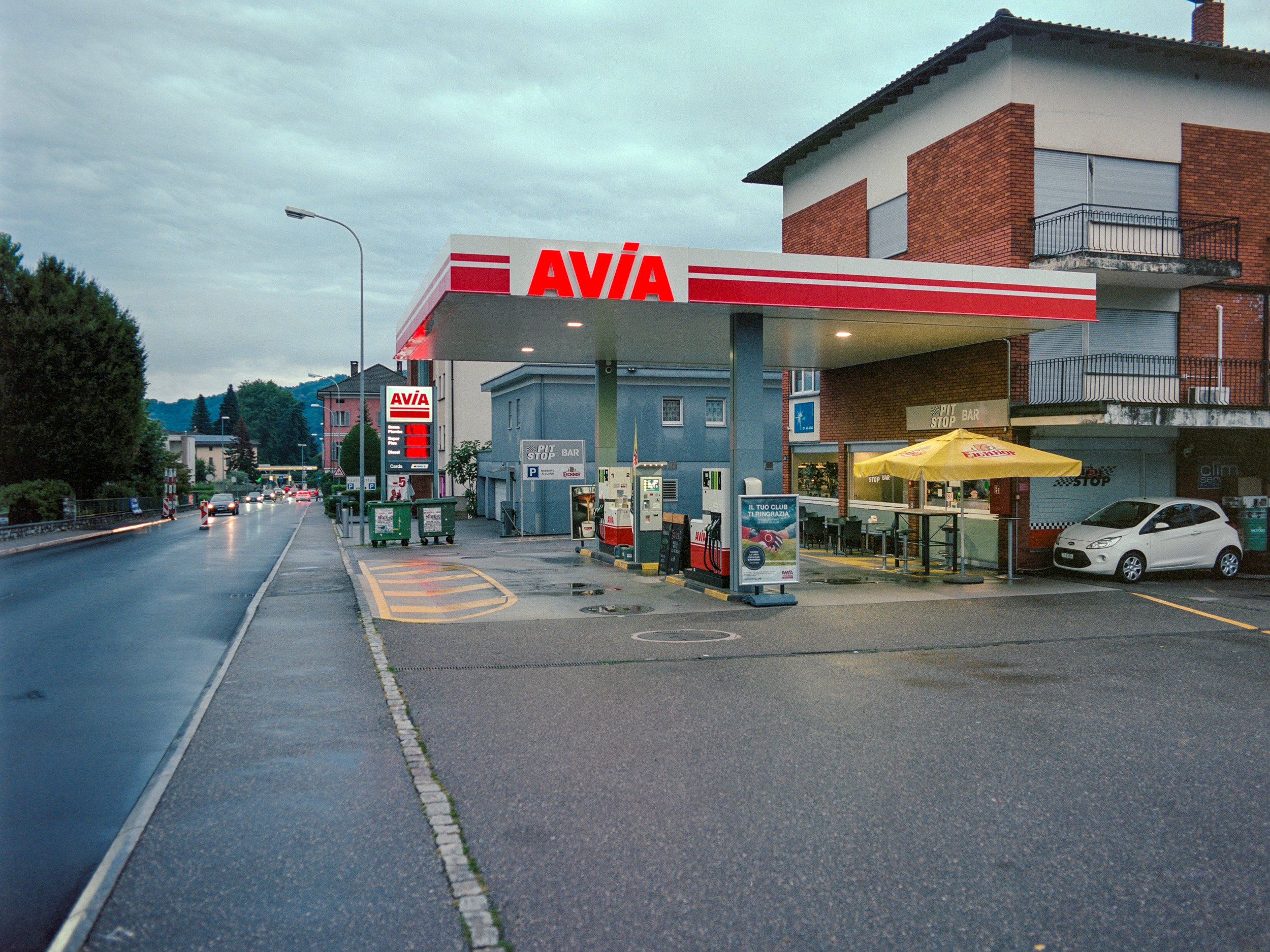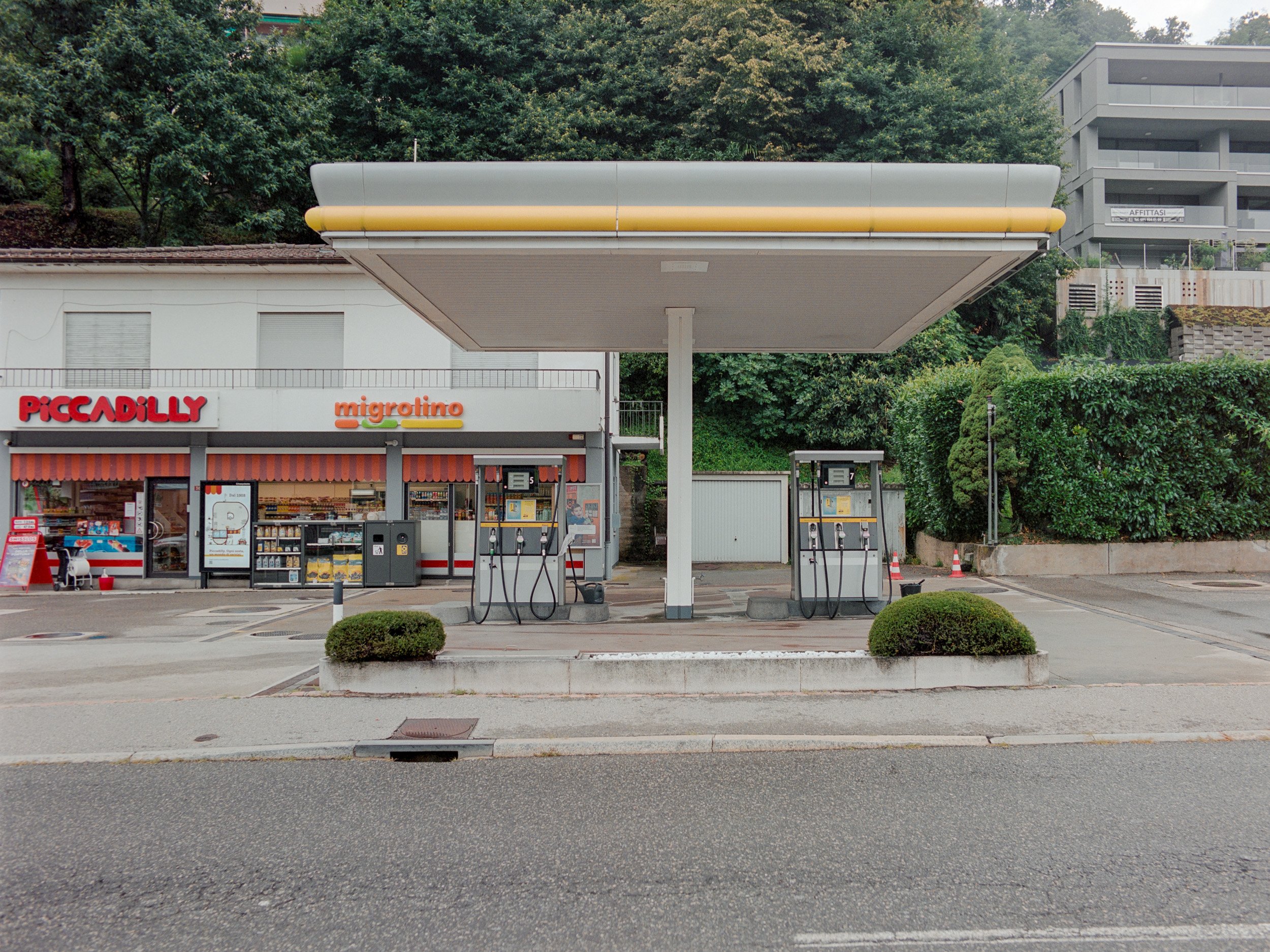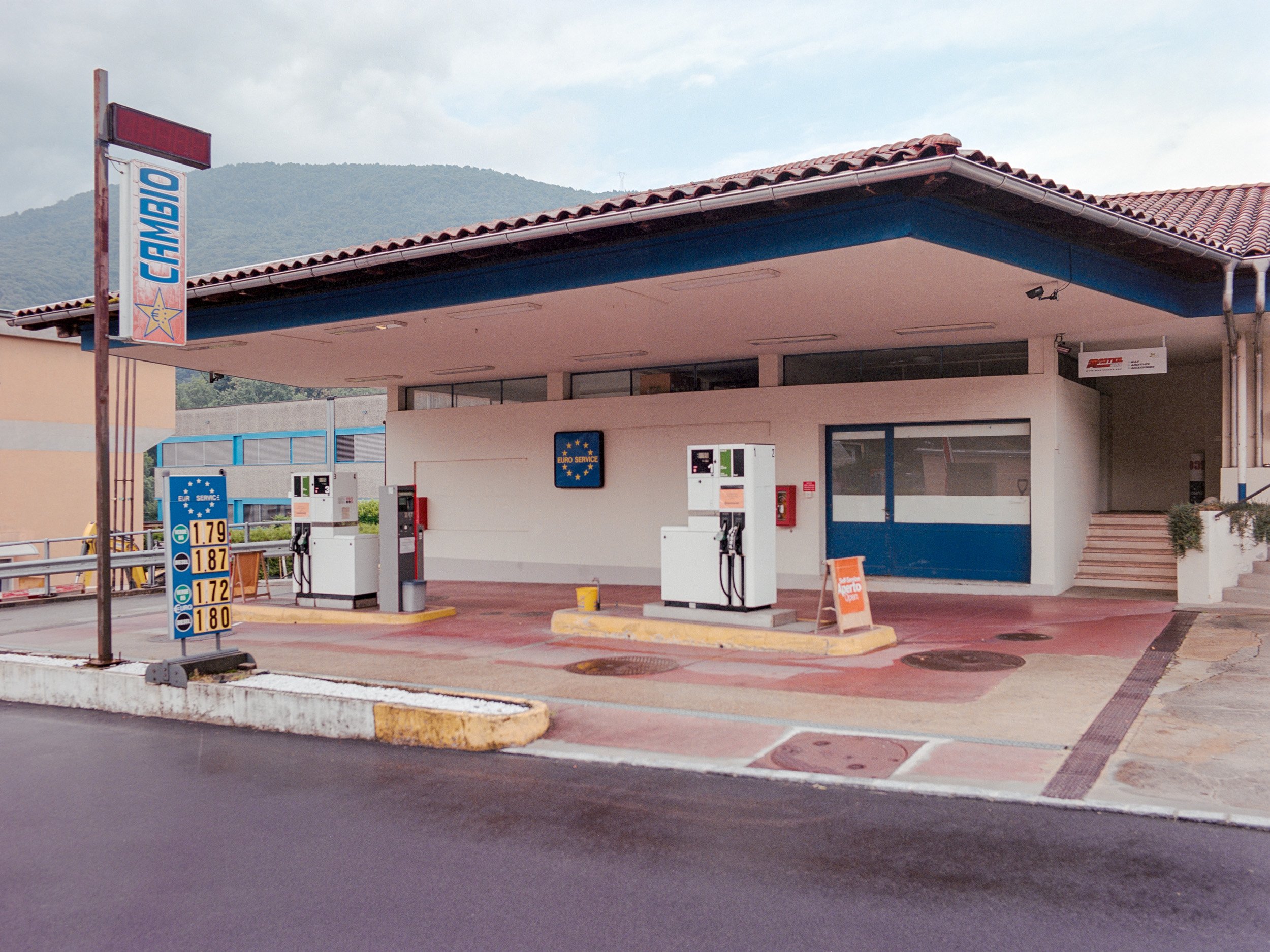In 2022, «Turismo del carburante», fuel tourism in Ticino, Switzerland, decreased by 90% due to lower gasoline prices in Italy, leaving many gas stations at risk of closure. More than twenty gas stations compete for customers on the Swiss side of the border with Italy on a ten-kilometer stretch along the Tresa River, and between the municipalities of Tresa and Magliaso.
For more than forty years, gas prices in the border area of the most southern region of Switzerland were 20 to 30 cents lower than in Italy. This created fuel tourism, travelers, but even more so the 77,000 Italians who work in Switzerland, fueling up at gas stations on the Swiss side before crossing the border. At around 1992 fuel tourism accounted for approximately 15% of overall fuel demand in the border regions [Banfi 2003]. A study estimated that 550 million liters of fuel sold across Switzerland in 2008 were attributed to fuel tourism [Keller 2015].
When the Swiss government removed the Euro minimum exchange rate in 2015, fuel became more expensive compared to the bordering areas, reducing fuel sales in the Ticino from 167 million liters in 2008 to 50 million liters in 2015 [Keller 2015]. For several years, Italy had a discount system in place that would give residents, who live close to the Swiss border, an incentive to buy gas in Italy.
The war in Ukraine increased gas prices across Europe, but not in all countries at the same rate. In March 2022, due to tax reductions by the Italian government, gas in Italy became cheaper than in Switzerland. Several media outlets reported that as a result fuel sales decreased by 90% in the border area to Italy and several gas stations reduced personnel or had to close. They asked the Swiss government to take action to protect the 1,000 workplaces in the fuel industry in the Ticino [Pöschl / Kučera 2022].
When traveling in the Tresa region, close to the Italian border, it is surprising to see a dense cluster of gas stations on the Swiss side, where no gas stations exist in Lavena Ponte Tresa on the Italian side of the border. By photographing these gas stations Stefan raises awareness for the economic and political situation on both sides of the border. Political decisions from both governments continue to impact gas prices and where people fuel up. Border tourism is nothing new. For decades people were crossing the border to buy cheaper products on the other side. Fuel tourism is just one example of it, but one with large economic consequences. In Switzerland, fuel is taxed at approximately sixty percent. With the significantly reduced fuel tourism and other factors, such as more gas efficient cars, in 2015 alone the country lost nearly 460 million Swiss Francs on fuel taxes compared to 2008.
Stefan counted and photographed twenty open gas stations on a ten kilometer long section along the border to Italy. The four municipalities on this route total an area of 18 km2 and a population of 10,500. Compared to the Swiss average, that area has a five times denser network of gas stations per 100,000 people (190.8 vs. 37.9) and 4.2 times more gas stations per 10,000 registered vehicles (21.9 vs. 5.2).
References
BANFI, Silvia, FILIPPINI, Massimo; HUNT, Lester C. 2003. Fuel tourism in border regions. ETH Zürich. Available online.
KELLER Mario. 2015. Tanktourismus und Eurokurs. Available online.
PÖSCHL Fabian. 2022. Nachbarländer senken Benzinsteuer. Tanktouristen strömen nach Italien – «jetzt muss der Bundesrat handeln». 20 Minuten from 5/2/2022. Available online.
KUČERA Andrea . 2022. Im Tessin bricht der Verkauf von Benzin ein. NZZ Magazin from 4/30/2022. Available online.
Product details: 8.5"x11" saddle stitched booklet, 25 spreads, 24 color photographs (7"x5.25").
The cover design pays homage to Edward Ruscha’s Twentysix Gasoline Stations from 1963. Tate considers Ruscha’s books seminal in the history of artist books.
10% of sales will be donated to a registered 501(c)(3) nonprofit organization in California that teaches art and photography to high-school students.
📸 Shot on Kodak Portra 400 film with a medium format film camera (120 film). Locally designed and printed in San Diego, California ❤️ Typography with Amazon Ember font.
© Copyright 2023 by Stefan Frutiger.













